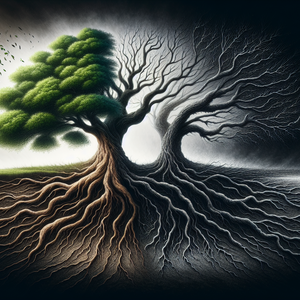The Hidden Lives of Urban Wildlife

Urban wildlife showcases incredible adaptability, often developing behavioral and physiological traits that allow them to thrive in human-dominated landscapes. For instance, raccoons have learned to navigate the complexities of city life by becoming more nocturnal, avoiding human activity during the day. Their dexterous front paws enable them to open containers, showcasing their ingenuity in finding food sources. A prime example of this adaptability can be seen in the common pigeon, which has evolved to thrive in urban settings by relying on human food waste. These birds have lost some of their natural fear of humans, allowing them to forage in public spaces, from parks to street corners. Additionally, studies have shown that urban birds tend to have different song patterns compared to their rural counterparts, adapting their communication styles to overcome the noise of city life.
Ecological Importance
The presence of urban wildlife plays a crucial role in maintaining ecological balance within city environments. For example, birds of prey such as hawks and owls help control rodent populations, while pollinators like bees and butterflies contribute to the health of urban gardens and green spaces. This interdependence is vital; without these predators and pollinators, cities could face significant ecological challenges, including overpopulation of certain species and reduced plant reproduction. Moreover, urban wildlife serves as indicators of environmental health, helping urban planners and ecologists gauge the state of local ecosystems. For instance, the presence of certain bird species can indicate the quality of green spaces, while the diversity of insects can reflect the health of urban gardens. By fostering biodiversity, cities can enhance their environmental resilience, making them more sustainable for future generations.
Human-Wildlife Interactions
The coexistence of humans and urban wildlife can lead to both innovative solutions and challenges. While many city dwellers appreciate the charm of watching birds and squirrels, conflicts can arise when wildlife encroaches on human spaces, leading to property damage or safety concerns. Understanding wildlife behavior and adopting humane practices can mitigate these conflicts. For example, educating the public about securing trash bins can reduce raccoon visits, while creating green corridors can facilitate safe passage for animals, promoting coexistence rather than confrontation. Cities like San Francisco have implemented successful programs to manage urban wildlife, including educational campaigns that encourage residents to coexist with local species rather than view them as pests.
Lessons in Coexistence
Urban wildlife teaches us valuable lessons about adaptability, resilience, and coexistence. Observing how these animals navigate their environments encourages us to rethink our relationship with nature. Instead of viewing urban spaces as barriers to wildlife, we can embrace the idea that cities can also be habitats. Initiatives such as community gardens, green roofs, and wildlife corridors demonstrate how urban planning can incorporate nature, promoting biodiversity and enhancing the quality of life for both humans and wildlife. Cities like New York have embraced the concept of "wildlife-friendly" urban design, creating spaces that support both human activities and natural habitats.
The hidden lives of urban wildlife remind us that nature is not confined to remote areas but can flourish within our cities. By appreciating and understanding the remarkable adaptability of animals like raccoons, foxes, and pigeons, we can foster a healthier coexistence that benefits both the environment and urban populations. As we witness the resilience of these creatures, we are inspired to create spaces that celebrate biodiversity, encouraging a harmonious relationship between humans and the wildlife that share our urban landscapes. In doing so, we not only enrich our own lives but also contribute to the ecological health of our communities. Embracing our urban wildlife can lead to a more sustainable future, where nature and civilization coexist in a delicate balance.
Urban Wildlife Biologist
Nonprofit organizations, government agencies, environmental consulting firms (e.g., The Nature Conservancy, local wildlife agencies)
Core Responsibilities
Conduct field research to study the behavior and adaptation of urban wildlife species.
Analyze data on species populations and their interactions with urban environments to inform conservation efforts.
Develop and implement management plans to mitigate human-wildlife conflicts in urban settings.
Required Skills
Strong background in ecology and wildlife biology, with experience in urban ecosystems.
Proficiency in statistical analysis and data collection methodologies.
Communication skills for engaging with the public and stakeholders about wildlife conservation.
Urban Ecologist
Municipal governments, research institutions, environmental NGOs (e.g., Urban Ecology Center, local universities)
Core Responsibilities
Assess the ecological impacts of urban development on local wildlife and biodiversity.
Collaborate with city planners to integrate green spaces and wildlife corridors into urban designs.
Conduct community education programs to raise awareness about the importance of urban biodiversity.
Required Skills
Expertise in urban ecology, landscape architecture, or environmental planning.
Familiarity with GIS and spatial analysis tools for mapping urban habitats.
Strong analytical and problem-solving skills, with the ability to advocate for sustainable practices.
Wildlife Rehabilitation Specialist
Wildlife rehabilitation centers, animal hospitals, nonprofit wildlife organizations (e.g., Wildlife Care Association, Urban Wildlife Rescue)
Core Responsibilities
Provide medical care and rehabilitation for injured or orphaned urban wildlife.
Coordinate with local authorities and communities to rescue and rehabilitate wildlife in distress.
Educate the public on wildlife safety and responsible interactions with urban animals.
Required Skills
Knowledge of wildlife medicine and rehabilitation techniques.
Experience in animal care, ideally with a focus on urban species.
Compassionate communication skills for engaging with the public and volunteers.
Urban Planner with Wildlife Focus
Urban planning firms, municipal planning departments, environmental consulting agencies (e.g., AECOM, local city planning departments)
Core Responsibilities
Design urban spaces that promote biodiversity and coexistence with wildlife.
Collaborate with ecologists and community stakeholders to develop wildlife-friendly policies.
Analyze land use and zoning regulations to incorporate green infrastructure and habitats.
Required Skills
Degree in urban planning, landscape architecture, or environmental design.
Understanding of ecological principles and their application in urban settings.
Strong project management and communication skills to coordinate with diverse teams.
Environmental Educator specializing in Urban Wildlife
Nature centers, schools, nonprofit organizations (e.g., National Wildlife Federation, local nature education centers)
Core Responsibilities
Develop and deliver educational programs about urban wildlife and conservation practices.
Engage with schools, community groups, and local organizations to promote wildlife awareness.
Create educational materials and resources that highlight the importance of urban biodiversity.
Required Skills
Experience in environmental education, with a passion for wildlife conservation.
Ability to convey complex ecological concepts in an engaging and accessible manner.
Strong public speaking and curriculum development skills.


